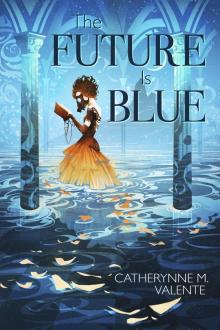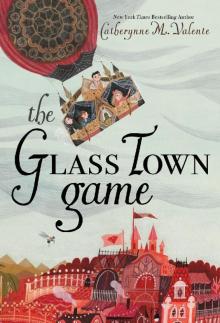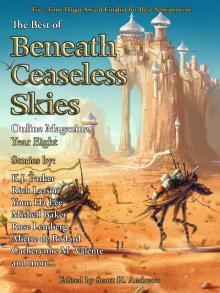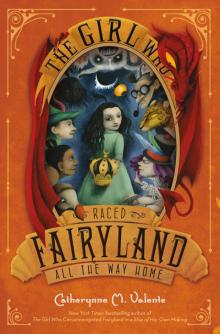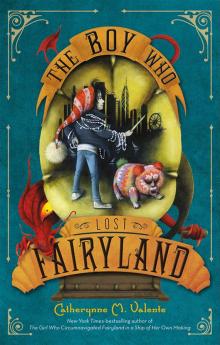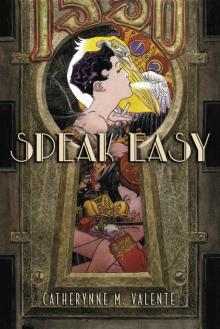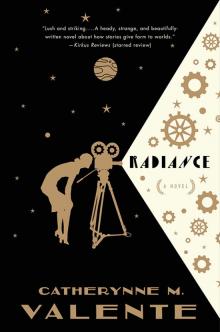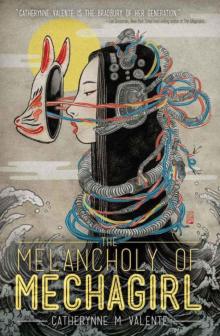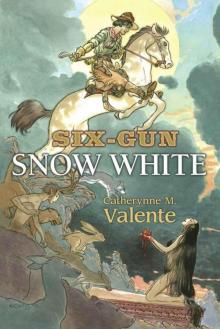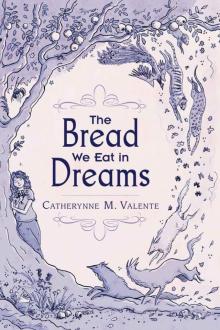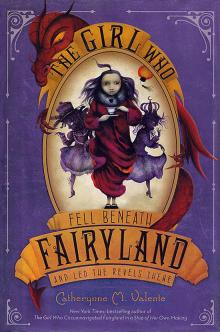


It's Time!, Page 6
Bruce Buffer
A company called Tommy Boy Records had licensed the right to add Michael’s voice saying “Let’s Get Ready to Rumble” as the opening track of an album of theirs called Jock Jams. You can still pick it up. Michael’s voice is the first track on the album, running twenty-five seconds. We thought it was a great honor to be the first track, sort of kicking things off, so to speak.
As soon as that album came out, everyone, from DJs to TV sports shows, was playing that track to kick off games and their drive-time morning radio shows. At the beginning, when we were still operating on a shoestring budget, I did a lot of the trademark enforcement on my own, without an attorney. I’d call TV networks, radio stations, and others and say, “Look, you may not realize this, but that track is formally protected by trademark. You need to license it separately from the album.”
And they’d say, “But we paid to license the performance rights to this album.” And I’d say, “Read your contract again.” I purposely did not give Tommy Boy the rights to license that track. And I purposely did not register the track with BMI, ASCAP, or any of the other organizations that ordinarily collect and pay royalties for public performances of songs. I knew that if I had gone that route, the phrase would have been played without my control and it would have had its fifteen minutes of fame and died like so many other catchphrases, such as “Where’s the Beef” or “Three-Peat.” I knew early on that I had to act to protect Rumble from just such a fate.
If people wanted to play Michael’s track publicly, they had to make a separate deal with us. Football franchises, for example, routinely licensed the rights to play a recording of Michael twice per game—at kickoff and halftime.
Most people were agreeable about it, but occasionally we’d get producers who arrogantly insisted that they had the right to do whatever they wanted simply because they had bought a ten-dollar compact disc, and because they were used to getting their way.
Next thing you know, I was dropping off my clothes at the dry cleaner’s and the man behind the counter said, “Hey, your brother was on the Don Imus radio show this morning!”
I sent Imus a letter asking him to please stop using Michael’s catchphrase until he’d worked out a license deal with us. As was typical of Don, he went on the air and announced that he’d just gotten a stupid letter from some jerk named Bruce Buffer. Then he proceeded to play Michael’s phrase, saying afterward, “Oops, I guess I shouldn’t do that.” I had our attorney, Mark E. Kalmansohn, draft a complaint for Federal court and send it to Imus, stating that if he did not stop his infringement, a lawsuit would be filed to protect our trademark rights.
One morning just days later, I got an early-morning freak-out call from Michael, who was in New York City on business. He had just opened his USA Today newspaper and read that Infinity Broadcasting, the CBS subsidiary that owned the Imus show, was suing Michael Buffer over the right to use our trademark and recording. If they won such a suit, it could result in releasing the phrase (and even the recording) into the public domain, where it could be used by anyone who wanted to use it.
“What the hell is going on?” Michael demanded. “Did you know this was going on?”
“I’m on it,” I said.
Well, I have to say that this was scary for us. We didn’t have the kind of money to be involved in a lawsuit with CBS. I had to decide: Do I cave? Or do I fight?
If I didn’t fight, people would just assume they could push us around because, let’s face it, people are accustomed to pushing around talent in Hollywood. The average person assumes that performers have all the control and power. That’s not true. Artists—actors, performers, musicians—are the lowest people on the totem pole. In the eyes of the power brokers, they are dispensable, interchangeable. It they don’t play ball, the power brokers just move on to someone who will.
It was David-and-Goliath time. I asked our lawyer to file our own lawsuit claiming infringement by CBS and Infinity Broadcasting. He wrote it up on the very afternoon Michael called me, and filed it the next day. Lo and behold, within forty-eight hours one of the largest media corporations in the world offered us a settlement and dropped their countersuit. That caught the eye of Variety and The Hollywood Reporter, which began covering these lawsuits because, for some reason, they considered it to be so unusual that a fight announcer should have a marketable property. Imagine that.
We’ve been involved now with 300 to 400 matters where we have pressed claims of infringement. The vast majority of those start and end with a letter or two: Please stop doing this; contact us if you want to license it. We’ve only had to file a dozen or so lawsuits, and most of those have been settled quickly by the other side. I’m not out to ruin anyone. I just want to protect our trademark. There’s a bright side to this: if people are stealing something, it’s a sign of how popular it is. If people stopped stealing Michael’s phrase, that would be a sign that perhaps the phrase’s time in the sun had waned. Thankfully, he and his phrase are still extremely popular all over the world.
The best stories we have about Michael’s catchphrase have nothing to do with violations by big media corporations or hotheaded DJs. They have to do with ordinary people who reach out to us with a special request: What’s it going to cost to play this at my son’s or daughter’s bar/bat mitzvah, or my wedding?
One wealthy gentleman hired Michael to fly to his wife’s birthday party. Michael hid behind a curtain, and the guy said to his wife, “Hey, honey, remember that man on TV that you enjoy so much?” And then out came Michael to announce her birthday. The woman got a kick out of it, her husband looked like a prince, and Michael collected a few bucks.
Amazing.
Another time, Michael was hired to visit a megachurch. There he was, walking out in front of a huge congregation of people dressed in their Sunday best to announce the pastor, and none other than Jesus Christ!
Hallelujah, indeed.
Within five years I had made a lot of Michael’s dreams come true. We started that business with a $5,000 check from each of us, and we never had to put in a dime financially after that. I’d helped make my brother a rich man and cemented his place as the best-known sports and entertainment announcer on the planet.
It was time for me to make good on the second promise I made the day we clinched our deal. A promise to myself.
6
TAP OUT
“Tap,” he said.
I was about thirty-five seconds into a sparring session with a skinny Brazilian kid I’d never heard of. He was on top of me, cradling my head while forcing my own arm against my throat so I could not breathe. It’s called a side choke, and it’s pretty effective. I felt myself slipping out of consciousness. So did he.
“Tap,” he repeated. “If you don’t tap out, you’re going to pass out.”
There was no use keeping up the charade. A smart fighter needs to know when he’s beat. If you don’t know your limits, you have nothing to shoot for in your training. If you pretend you don’t have any limits, if you try to stick it out just a little bit longer, you can get seriously hurt because your opponent has no choice but to escalate the fight to the next reasonable level. Like knocking you out or choking you to the point of unconsciousness.
I patted the mat with my fingers.
It was 1991, a few years before Michael and I cemented our business partnership. I had recently relegated myself to a training regimen of gym work and light sparring. When I was a kid, I learned to box, and went on to earn a black belt in Tang Soo Do, and dabbled in a couple of other martial arts, trying to build my repertoire. I’d fallen in love with kickboxing and had committed to training and sparring in that one sport multiple times a week for many years. But the demands of business had sidetracked me. I was happy with the way my career was going, but I hated losing time in the gym. To make it worse, I was getting older, and taking on crazy sparring sessions just to convince myself that I still had it.
One day I had a sparring match with a guy who had about twenty-five pounds on me. I won the
match, but incurred a concussion in the process. The next morning I woke up with blurred vision and I was slurring my words. I went to the doctor that afternoon.
“Do you fight for a living?” the doctor asked, frowning.
“No,” I said.
“Then stop,” the doctor said.
“What—why?” I’d been sparring weekly for the past seven years. Though the dream was dimming, my image of myself as a person who worked out by sparring was still pretty strong.
“That slurring of words you did this morning … you’re how old now? Thirty-two? Well, if you keep this up, when you’re forty-five it’s gonna be a lot worse. Let me ask you again—do you make any money off this?”
“No. I’m a businessman. I do this to stay in fighting shape and because I love it.”
He was incredulous. “Love?” he scoffed. “Work out another way.”
He was right. If you don’t intend to fight for a living, you probably shouldn’t be going toe-to-toe in the ring on a weekly basis—especially when you have family members depending on your brainpower. I had my business with Michael and the business with my parents to consider. I wouldn’t be able to do either of those jobs if I got seriously hurt. And let’s face it, no one wants to be slurring their words when they’re sober. So I reluctantly ended my sparring sessions and transitioned over to circuit and weight-training workouts, surfing, beach runs, and various other regimens that kept me in shape.
A family friend, John Milius, called around this time. John is a film producer, director, and Hollywood screenwriter best known for Apocalypse Now, Big Wednesday, Red Dawn, and Conan the Barbarian. He and my father went way back, and connected through their various passions: writing, movies, boxing, martial arts, guns, guns, and guns. John was younger than Dad, about the same age as my brother Michael. John’s a big, strong guy with a beard and sunglasses, and he’s something of a legend in Hollywood, even among people who don’t adore weaponry. He’s said to have inspired John Goodman’s gun-toting character Walter in the Coen brothers’ hilarious film The Big Lebowski.
John loved my mother’s cooking and used to come over our house for brunch on weekends. He used to regale all of us with his stories of guns, wars, and movies. He used to invite me over to his offices at Sony Studios on Friday nights, where he’d treat his staff and stuntmen to beer and pizza. One time we went shooting deep in the canyons of Malibu. He took me and a friend out into the middle of nowhere, and popped his trunk, which was just loaded with a variety of weapons. We fired off a ton of rounds and called it a day. It was a highly therapeutic way to blow off steam, and I’d do it myself on my own from time to time—until I realized that I was unwittingly going shooting alone in a canyon where some bodies had reportedly been found. I stopped going real quick, let me tell you.
So, back when John phoned me, he’d been training in Brazilian jiu-jitsu at a fascinating dojo in Torrance. “Bruce,” he said, “you gotta come out here and meet these guys. They do a different kind of jiu-jitsu. Submission stuff.”
The Gracie Jiu-Jitsu Academy opened its doors in Torrance, California, in 1989. You could call the Gracie family the Kennedys of Brazilian jiu-jitsu, with the ironic observation that the Gracies tend to get hurt less. The family patriarch, Helio Gracie, along with his brother Carlos, perfected their distinctive brand of jiu-jitsu throughout the 1930s and 1940s. The Gracie style of jiu-jitsu relied less on brute strength than on working as efficiently as possible in every fight to force an opponent to tap out. Helio’s four sons left Rio de Janeiro for Southern California in the late 1980s, with the goal of introducing Gracie jiu-jitsu to an American audience.
At this point, UFC 1 was still more than a year off in the future. The term mixed martial arts had not yet even been coined.
I drove out to the family’s dojo with John. One of Helio’s sons was training in the gym at the time, and came over to introduce himself.
His name was Royce.
As soon as John told him that I was an avid martial artist and kickboxer, Royce invited me to do some sparring with him. It was an odd request. He was six-foot-one, about 175 pounds, and didn’t look to be terribly muscled under his gi. I was burly and strong, and had several pounds on him. I was a powerhouse. But what the hell. I agreed.
He led me to a private, padded room, closed the door, and said, “I want you to come at me with all you’ve got.”
“You’re sure?” I said. “We’re not holding back?”
“No—go all out. I want you to take my head off.”
I went at him like an animal. Thirty seconds later, this guy had me bent like a pretzel on the mat. I was sweating like a pig, and he was slowly closing off the air to my lungs.
Hence the tap.
He loosened his grip and rolled off me.
“See,” Royce said, straightening his gi, “isn’t it nice not to get hit in the face?”
“You know what,” I said, my eyes refocusing, “it sure as heck is.”
BUFFERISM NO. 6
“WARRIOR SPIRIT FOREVER!”
What does a warrior do? He fights to his last breath. When he’s knocked down, he gets up and tries to win the war with whatever it takes, until he’s dead, physically or mentally. I approach everything I do with that same warrior spirit. It’s the only way to live. Otherwise, what’s the point?
I didn’t know it that day, of course, but all four of the Gracie brothers would become MMA legends and instrumental in the birth of the UFC. The youngest kid, the one who’d mopped the mat with me, would become the tournament winner of UFC 1, UFC 2, and UFC 4, and fought to a draw with Ken Shamrock in the championship match in the UFC 5’s Superfight. And my dad’s friend, John Milius, would be credited with helping to design—along with Rorion Gracie—the Octagon itself. Actually, and this shows you the kind of guy Milius is, he wanted the Octagon to be surrounded by a moat filled with dangerous fish.
The sport I encountered that day in Torrance was different from anything I’d ever seen. What Royce threw at me upended everything I knew about fighting. I’d rushed to a doctor the other day because I’d fought a guy I shouldn’t have, a guy who was way out of my weight class. But Royce had taken on a trained man, me, who was bigger than he was, and he’d kicked that man’s ass. For all the two decades I’d spent practicing Tang Soo Do, judo, tae kwon do, and kickboxing, the only way I could save myself in this sparring match was to tap out. Were Royce or any of the brothers Gracie to challenge me in a street fight, I would be at the mercy of passersby to notify the police.
That’s not a good feeling, but it taught me something. These guys were thinking about fighting in a whole new way. They were like the genius number-cruncher in the book and film Moneyball who realizes that the only thing that matters is scoring runs.
In the fight world, the rest of us were thinking of beating our opponents through brute strength and careful strategy. The Gracies threw brute strength out the window. When they fought, they were thinking of one thing only: How fast can I get this guy in a choke and get him to tap out? The Gracies had turned fighting upside down. They’d shown that it was possible for little guys to beat monsters, for fighters of different skill sets to match wits with each other in the ring.
• • •
THE first time I watched a UFC bout on TV, I was floored. Say what you will about the uneven matchups of those early fights—the sumo wrestler getting pounded by a French savate-trained kickboxer, or the wrestler getting his ass handed to him by the karate practitioner—you could not deny that it was tremendous spectacle.
Now, granted, if the sport was going to survive, it had to rise above mere spectacle. But for now I couldn’t look away, and neither could anyone else. The UFC looked like one of the most exciting sporting events to come down the pike in a long time. I couldn’t not get Michael a gig with the organization. That kind of exposure would expose him to a different sort of fan, and who knew where that could lead?
So I called the organization, made my pitch, and landed Michael the most l
ucrative per-show contract he’d seen until that time, with the exception of the WCW. With Michael locked into a three-fight deal starting with UFC 6, we packed our bags one night in July 1995 and headed for the first UFC we would ever attend, in Casper, Wyoming. Those were the days of the great UFC Tournaments, where fighters could fight up to three times in a single night, depending on how well they were doing. This marked the debut of Tank Abbott, who fought his way through the quarters and semifinals, only to lose by submission to the Russian Oleg Taktarov. Tank and I didn’t know each other at the time. We would soon become friends. At the time he looked like one of the most formidable fighting monsters I had ever seen in my life.
It was a great night for Michael, who was introducing himself to a whole new crowd of fans. But come Monday, the hammer fell. I got a call from my contacts at the WCW. They hadn’t really minded when Michael took on the UFC gigs, and his contracts with them certainly didn’t prevent him from doing the UFC shows. But they were unhappy with the words he’d been given to say at those UFC bouts:
“If it’s not in the Octagon, it’s not real!”
If you watched and loved the UFC, you knew exactly how true those words were. To the WCW, they felt like a particularly stinging dig, because in 1995 the pro wrestling world wanted people to think that what they were watching was real. When people saw Hulk Hogan pound someone twenty-five times in the head, the audience was supposed to think, Oh my God, that guy’s dead meat! He’s gonna die! Well, folks, no, he’s not; you’re watching a stunt performance.
I thought that the UFC was the most skilled no-holds-barred fighting you were ever going to be allowed to see. But the WCW was wildly popular at the time. Between Michael’s fight appearances and his Ready to Rumble merchandise that the WCW sold, the WCW was Michael’s largest source of income. We couldn’t afford to jeopardize it. The decision was obvious. I told them that Michael would fulfill his three-fight deal with the UFC but decline further offers.

